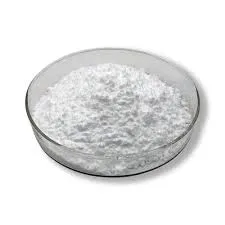
Sht . 23, 2024 05:29 Back to list
hydroxyethyl cellulose viscosity concentration
Understanding Hydroxyethyl Cellulose Viscosity and Concentration
Hydroxyethyl cellulose (HEC) is a non-ionic, water-soluble polymer derived from cellulose, extensively used in various industries due to its unique properties. One of the most critical aspects of HEC is its viscosity, which is influenced significantly by its concentration in solution. Viscosity is a measure of a fluid's resistance to flow, and in the case of HEC, it plays a vital role in its performance in applications ranging from pharmaceuticals to construction.
When HEC is dissolved in water, it forms a viscous solution that can be modified by altering its concentration. Generally, as the concentration of HEC increases, the viscosity of the solution also rises. This behavior is attributed to the polymer chains' ability to entangle and interact with one another as more HEC molecules are present in the solution. At low concentrations, the viscosity may be relatively low, but as the concentration exceeds a certain threshold, the solution becomes more resistant to flow, resulting in increased viscosity.
The relationship between viscosity and concentration is crucial for formulating products in various sectors. For example, in the pharmaceutical industry, HEC is often used to enhance the texture and stability of topical formulations. The desired viscosity level ensures that creams and gels maintain an optimal consistency for easy application while ensuring effective drug delivery.
hydroxyethyl cellulose viscosity concentration

In the construction industry, HEC serves as a thickening agent in cement, mortar, and other building materials
. Adjusting the viscosity through concentration allows for better workability and adherence properties, making the materials easier to apply and ensuring optimal performance.Moreover, the viscosity profile of HEC solutions can be tailored to meet specific requirements. By adjusting variables such as the degree of hydroxyethyl substitution and molecular weight, manufacturers can produce HEC with particular viscosity characteristics suitable for particular applications.
In summary, the viscosity of hydroxyethyl cellulose is highly dependent on its concentration in solution. Understanding this relationship is essential for utilizing HEC effectively across various industries. Whether improving the consistency of personal care products or enhancing the performance of construction materials, the ability to manipulate viscosity through concentration remains a vital asset in product formulation and application.
-
Versatile Hpmc Uses in Different Industries
NewsJun.19,2025
-
Redispersible Powder's Role in Enhancing Durability of Construction Products
NewsJun.19,2025
-
Hydroxyethyl Cellulose Applications Driving Green Industrial Processes
NewsJun.19,2025
-
Exploring Different Redispersible Polymer Powder
NewsJun.19,2025
-
Choosing the Right Mortar Bonding Agent
NewsJun.19,2025
-
Applications and Significance of China Hpmc in Modern Industries
NewsJun.19,2025







